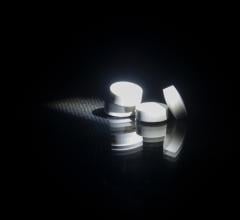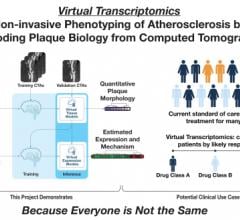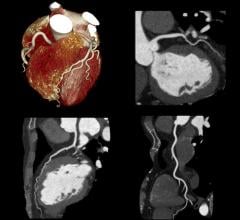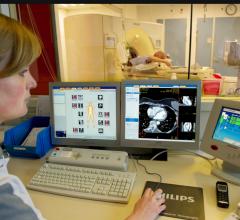
October 31, 2016 — At the 2016 annual meeting of the Radiological Society of North America (RSNA 2016), GE Healthcare will introduce the Revolution CT (computed tomography) scanner with Whisper Drive technology, designed to take high-speed scans that allow full imaging of the heart in just one heartbeat.
This is accomplished via a high-speed X-ray tube, weighing about 100 pounds, that routinely reaches 70 Gs as it circles around patients lying inside the machine’s gantry up to five times per second. This high speed, combined with intelligent motion correction, allows doctors to image the heart in just one heartbeat. But it also makes the spinning part — which includes the X-ray tube, a detector and a high-voltage transformer supplying them with power — accelerate so fast that it weighs the equivalent of 3.5 tons.
According to GE, the 80 cm gantry must complete one full rotation around the body in one heartbeat in order to get a clear and detailed image of the heart — the equivalent of five rotations per second. The gantry was constructed from aerospace-grade aluminum and includes a system of springs that absorb the acceleration, ensuring parts like the electronic board inside the detector do not move.
GE also included fail-safe design features. The 100-pound box that rotates around the gantry is attached with screws and also a dovetail lock as a double system of safety. In case the screws break, the rail will hold it back.
From a power standpoint, GE said the system utilizes contactless transmission (induction) to send power to the machine and collect the imaging signal from it. Older CT scanners used brushes to transmit power, but increasing the speed led to wear and reliability issues, according to the company. A basic CT uses 24 kilowatts and generates eight image slices per second; Revolution CT uses 100 kilowatts or more and generates 512 slices, allowing easier imaging of moving parts like the heart.
The design also allows GE to change the energy of the imaging spectrum during a scan. When the images are processed with a special algorithm, this allows users to see the composition of the body.
GE said it is currently working to develop the next-generation generator that would allows users to see exactly what they want in terms of the quantity and quality per image, and reduce radiation even more.
For more information: www.gehealthcare.com


 March 07, 2024
March 07, 2024 








